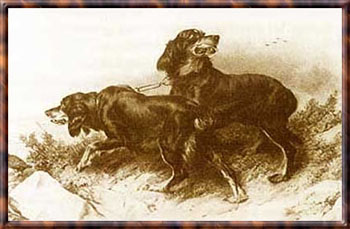|
|
|
In fact, this wonderful type - that is the youngest breed among Setters - is the result of a "breeding mistake". Harsh Scottish climate conditions called for a firm resistant breed. Alexander IV, Prince of Gordon (1743-1827) had mated one of his Collie bitches to a dog that had excellent hunting abilities. Six black puppies having brown and white markings were born by this pairing. The puppies mainly took after their Dad - as it turned out later, and the type was named after their breeder. Later on, Father Parson Pierce was who made the Gordon Setter more graceful, quicker and cleverer. The breed was further shaped by Russian, German and Norwegian breeders producing the type that comes closest to the Gordon Setter of today. Despite of its strong body, it remained agile to cope with work in fields and marsh having special intelligence and unique sense of smell. Thanks to the excellent abilities of the breed, Gordon Setter won the first, second and third prize at the first Field Trial in Southhill, on 18th April 1863. The basic colour of the breed is bright black with tan markings. The head is stronger than the other setter breeds, stern facial expression is characteristic. The appearance of a Gordon Setter evokes the picture of an athlete that can bare any physical strain without getting tired, thanks to the will-power of this robust dog. On the other hand, it has the same grace and charm as the other Setter breeds, this is why it is so unique and special. It is becoming more and more popular in the United States, Australia and New-Zealand. (In all three countries they have a lot of coat).
The breed is also very popular in Hungary due to its faithfulness,
reliability and affection. |
